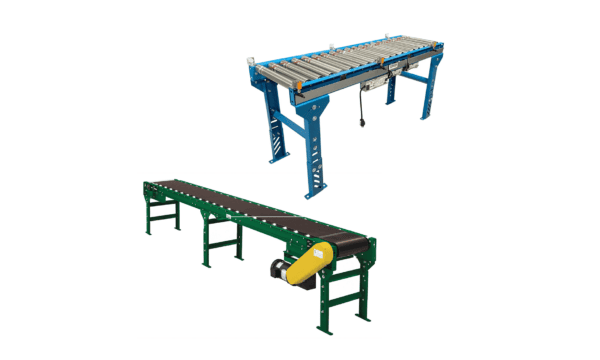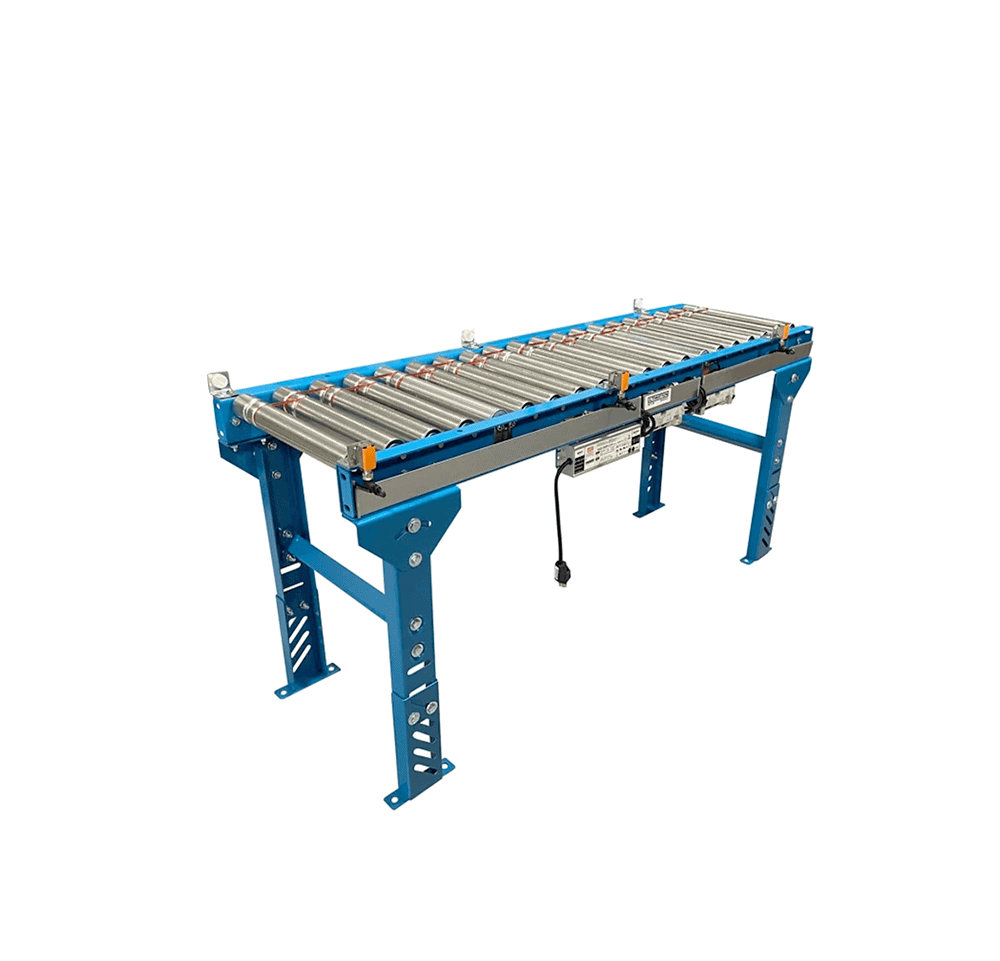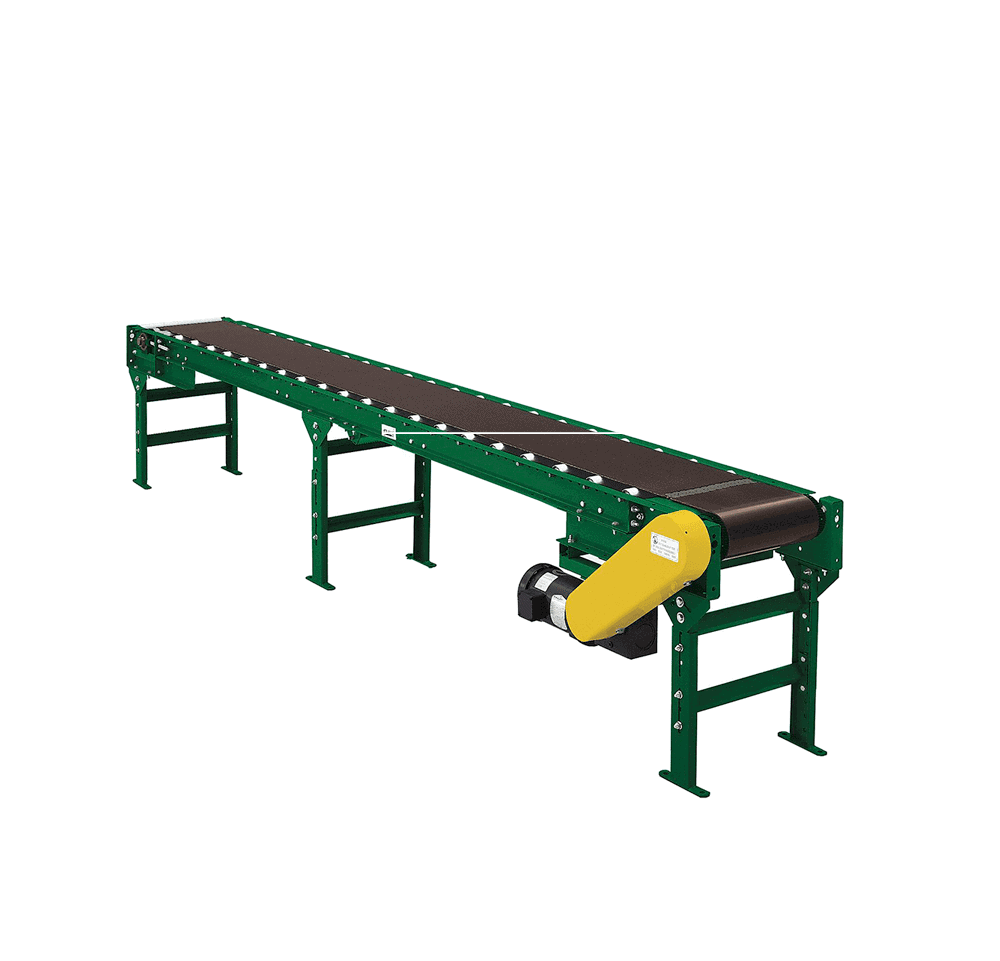

Belt Conveyors
Consisting of two pulleys with a continuous loop of belting material used to convey products, stabilized by the wide belt resulting in smoother delivery.
The belt conveyor is designed for transferring products and materials that need a flat surface. This machine can move loads horizontally, at an incline/decline, and is able to move smaller items that fall between rollers or skate wheels.


